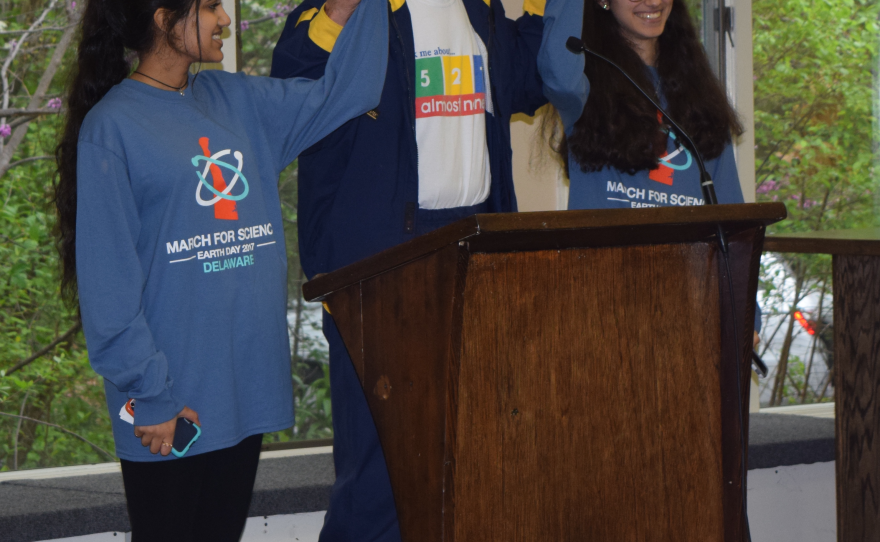More than 600 people chanted “science not silence!” as they marched through the City of Newark - one of hundreds of science marches happening across the globe Saturday.
The March for Science spawned as an effort to protest President Trump and his administration’s policies against science; but many saw Delaware’s March for Science and Our Earth at the Unitarian Universalist Fellowship of Newark as more than that - as a celebration of science encouraging people to understand the role science plays in daily life.
As they marched from the UUFN to South Main St., and South College Ave., North Wilmington resident Andy Joppa held his four-year-old daughter Felicity’s hand tight. He said it’s important for children to understand science from an early age.
“I think it’s already our children’s Earth,” Joppa said.
The march attracted people from Maryland close to Newark, like the Sickles family from Cecil County. Charlie Sickles, 8, said he wants to be an engineer when he grows up, and understanding the environment and Earth is crucial to understanding engineering.
Sickles said he feels the Trump administration “doesn’t think it’s is very important to protect the planet.” He’s worried that if we don’t take care of the planet, the environment will be in danger.

“The environment is what gives us air, right?” Sickles said. “If that gives us air and we start to kill it, then we might be losing air and if we lose air, then we die.”
Charlie’s father, Larry, had a smile on his face watching his son ask a volunteer questions before the march about a dog skeleton that was on display at the UUFN. Both he and his wife teach science in the public school system.
“We try to pass that level of passion onto our kids and I think it worked,” Larry Sickles said.
As a low-lying coastal state, Delaware is prone to sea level rise. According to University of Delaware research, 8 to 11 percent of the First State could be under water by 2100.
During a series of speakers after the march, John Callahan from the Delaware Geological Survey said the First State is already seeing some of the effects of climate change and sea level rise - including warmer temperatures, droughts and flooding. Temperatures in Delaware have increased by 2 degrees since 1900 and sea level rise has increased by about 13 inches, Callahan said.
“And on top of this, Delaware - our land is sinking, we are,” Callahan said.
Callahan said sea levels have increased by 8 inches globally over the last century, so Delaware's sea levels are rising at a much faster rate.
Vyshnavi Kosigishroff, one of the organizers of the march, previously told Delaware Public Media that she wants her future children to know what a glacier is. She added as climate change becomes a bigger problem, she wants her children to understand it.
“It’s important for us to give our future children, our future grandchildren the tools to fix the Earth,” Kosigishroff said. “We seem to not come to consensus whether we want to fix it or we need to fix it, but it’s very obvious that we do.”
The March for Science was based in Washington D.C., but many smaller, local marches joined in to celebrate science and what it can accomplish. Delawareans also gathered in Lewes to march.
Updated at noon Tuesday, April 25 to emphasize that sea levels have risen 13 inches in Delaware over the last century, and approximately 8 inches globally during that time.






